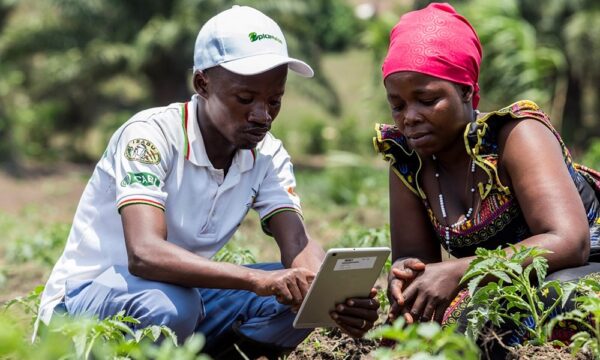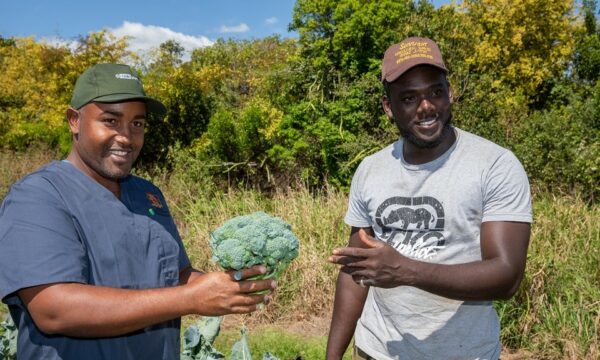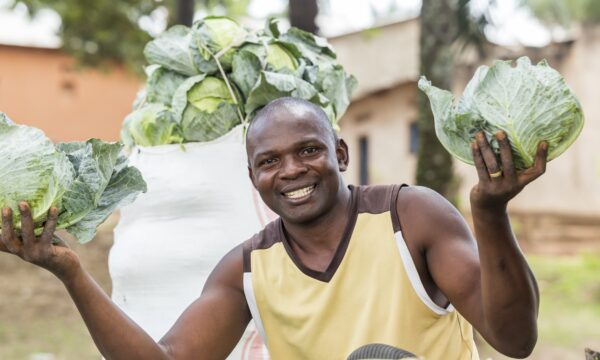Contributed by Aldo Hanel and Naitram Ramnanan, CABI.

The Northern Range region in Trinidad and Tobago is not only home to the most pristine and untouched areas of the country but it also provides the best agroecological environment for christophene (chayote) production in the country. Follow up from a sample brought to a plant clinic in 2015 revealed that the disease known as Gummy Stem Blight, caused by the fungus Didymella bryoniae, was pervasive in christophene farms in the Northern Range. Government reports show that since the outbreak of this disease, christophene production has dropped significantly.
CABI and its partners on the Plantwise programme, including the Ministry of Agriculture, the University of the West Indies and the National Agricultural Marketing and Development Corporation, are working with farmers to transform the crop to a sustainable local industry using an IPM (integrated pest management) strategy to sustainably manage the disease. This collaboration has revealed interesting insights into the economic and social impacts of the disease on both farmers and consumers.
 Results of a survey revealed that 53.5% of christophene farmers earn more than 80% of their families’ income from agriculture. For 75% of these farmers, christophene was reported as their major crop (over 60% of all agriculture related income). Few other crops are viable in the region, which means that farmers have grown christophene for up to 12 to 15 years in some instances. This poses additional challenges for managing diseases and makes the adoption of an IPM strategy imperative.
Results of a survey revealed that 53.5% of christophene farmers earn more than 80% of their families’ income from agriculture. For 75% of these farmers, christophene was reported as their major crop (over 60% of all agriculture related income). Few other crops are viable in the region, which means that farmers have grown christophene for up to 12 to 15 years in some instances. This poses additional challenges for managing diseases and makes the adoption of an IPM strategy imperative.
But what is the true impact of this disease on farmers and consumers?
Farmers are able to mitigate some of their economic losses by increasing overall prices during periods of lower yields caused by high incidence of the disease and environmental factors, especially from June to December. They are also able to recover some losses by selling less attractive fruits to channels other than the fresh trade such as restaurants, school food programmes and hospitals who might use christophene as an ingredient for special diets. Unfortunately, consumers in the fresh fruit market having a seven month period with cost of the fruit ten times higher than the price in the international trade. Data from The National Agricultural Market Information System (NAMIS) shows that in 2015 prices ranged from TT$ 5.45/kg in March to TT$ 27.47/kg in October.
Plantwise is working with its partners in Trinidad to reduce losses caused by Gummy Stem Blight and improved agronomic practices to improve yield of this crop. This collaboration is expected to have a positive impact for both the christophene farmers and the general public consuming this healthy fruit.
Related News & Blogs
Common Papaya Disorders: A Comprehensive Guide
Papaya, also commonly known as the papaw or pawpaw, is a large tropical fruit-producing plant originating from Central America. Market demand for tropical fruits has steadily grown, and consequently, the papaya has become an important agricultural expo…
3 April 2024




